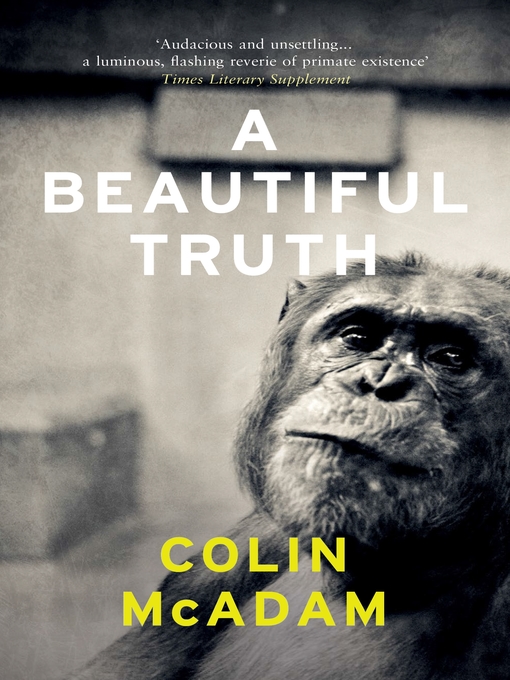The beginning: To cheer up his wife Judy, who is saddened by their inability to have children, a man called Walt buys and brings home a baby chimpanzee. Judy and Walt name him Looee and raise him as their own child.


The end (no spoilers you couldn’t guess on your own; but still, spoilers): Not very informative. Looee is no longer living with Walt and Judy, a future we all saw coming. He now lives in what seems like qualified contentment with some other chimpanzees. Maybe a refuge? A portion of the sales profits on this book are going to Save the Chimps, a Florida refugee for chimpanzees rescued from research labs and entertainment industries, so maybe Looee has ended up somewhere similar? I can’t really tell.
The whole: A Beautiful Truth (affiliate links: Amazon, B&N, Book Depository) is the second book I’ve read this fall about humans attempting to raise chimpanzees as if they were people, and about the scope of the similarity between humans and our closest cousins, the (other) great apes. The first, Karen Joy Fowler’s wonderful We Are All Completely Beside Ourselves, is about the relative humanity of animals; whereas A Beautiful Truth is about the relative animalness of humans. Perhaps McAdam’s greatest narrative success is in describing the behavior of humans in exactly the same dispassionate tone as he uses to describe the behavior of the chimpanzee community where Looee will eventually end up:
[Judy] bought a Little Learners two-sided wood easel, and she would stand and paint on one side while he sat up on a stool and painted on the other. He regularly came around to her side and made his noise for I like this. Sometimes she imagined she could see real shapes in his paintings. Maybe that was possible.
Cf descriptions from the chimpanzee community:
Ghoul [a chimpanzee] got down from his chair and walked carefully. He looked through the open doorway and the Visitor was eating and making noises. Dave [a human, Ghoul’s main trainer] was sitting on his chair and Ghoul looked at all the chomp that went into the machine and wondered whether to eat or run or jump on Dave or hide in his bedroom with a doll. Dave said Ghoul be good in his normal Dave voice and he got down on the floor and they sat.
That isn’t to say that this is not an impassioned book. In interviews promoting the book, Colin McAdam has described his experiences visiting a chimpanzee refuge as “life-changing”. He says that visiting with these chimpanzees, who had been brutally mistreated in various settings over the course of their lives, and finding them still sociable and wanting to be friends, made him rethink all of the things (like empathy, and grace) that we tend to consider the exclusive realm of humans.
Though the above remarks by McAdam, combined with the donation of proceeds to the Save the Chimps organization, led me to expect a sentimentalized depiction of the chimpanzees. In fact it’s anything but. The events that take Looee away from Walt and Judy are horrifying — the more so because they seem to come out of nowhere — and the chimpanzee community undergoes several brutal power shifts that leave chimps injured or dead. But the book’s strength is that cruelty and thoughtlessness fly in all directions, irrespective of species: for instance, we see chimpanzees repeatedly infected with various strains of diseases ranging from the common cold to HIV, as pharmaceutical companies work to find a cure; and the humans who observe the chimpanzee community do not step in during violence episodes, even to prevent infanticide.
Having just this moment described McAdam as unflinching, honesty compels me to admit that he flinches when it comes to chimpanzee sex. My distaste for cutesy sexual euphemisms is well (and shoutily) documented, and now I know that it extends to cutesy chimpanzee sexual euphemisms (rosé, pinned as in the dude chimps pin the lady chimps, y’all, I know, I feel gross even typing this; there were also some words McAdam made up which felt weird in another way but bothered me much less). Inconsistent deployment of these euphemisms did not markedly decrease my dislike of their use. But this is a relatively small gripe in an otherwise sure-handed book.
Cover report: American cover wins. You can’t tell from the picture, but the sky part of the cover is matte, while the white square that the chimpanzee is caged in is a glossy white. It’s a cool, effective cover design.
Note: I received this book from the publisher in exchange for an honest review.